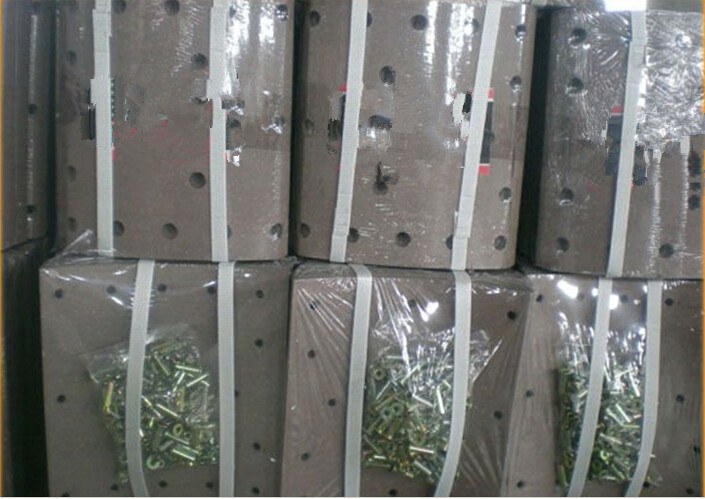Packaging & Delivery
| Packaging Details: | cartons,pallet |
|---|---|
| Delivery Detail: | 25 days |
OKorder Service Pledge
OKorder Financial Service
You Might Also Like
Size: 90x 9.6 x360
Car Make: KATO
OE NO.: GG-113/1 UK090-01 15240
Place of Origin: Jiangsu, China (Mainland)
Brand Name: hi-best
Model Number: GG-113/1 UK090-01 15240
color: black/brown/yellow/green
PC: 4
rivets: L7.5
holes: 12
slot: yes
chamfer: yes
grade: GG/FF
test: chase
label: according to requirement
noise: none
| Packaging Details: | cartons,pallet |
|---|---|
| Delivery Detail: | 25 days |
Product Description
light & heavy duty brake lining
Very efficient when braking and low wearing, minimum loss of efficiency on wet surface.
Low wear of the rotors.
powerful and progressive brake that doesn't fade.
Low lost of efficiency on wet conditions. Low to no-noise.
Smooth on rotors, very effective for high line tourisms.
Produced f or both axels, it can be applied on the rear axel on competition vehicles of front wheel drive.
——————————————————————
Specification
| WVA | MAFF | BFMC | DIMENSION | DRUM DIAM | APPLICATION |
| 19932 | 315.1290.0 | SV/41/2 | 203×19×235 | 410 | bpw |


Send your message to us
OKorder Service Pledge
OKorder Financial Service
Similar products
Hot products
Hot Searches
Related keywords